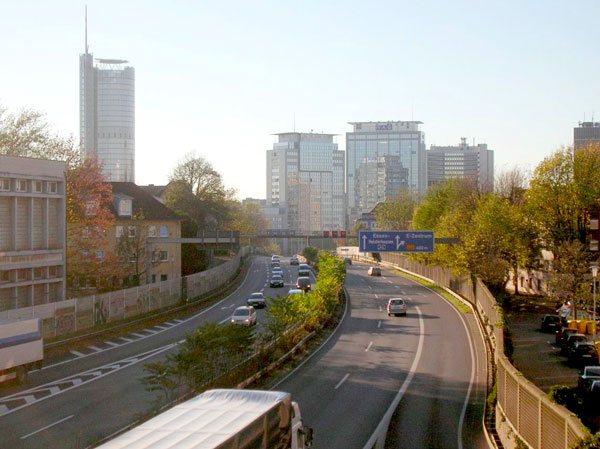A40 in Essen Photo: en: User: Doco License: CC BY 2.5
–
The car plays a bigger role in the Ruhr area than in any other German metropolitan area. Regardless of whether it is for work or leisure, people in Duisburg, Dortmund and Essen use the car much more than in other major German cities. This emerges from the mobility study “Myth of the mobility turnaround – disruption is still to come” by market research by Motor Presse Stuttgart and the consulting company MHP, from which the magazine auto motor und sport will appear in its Thursday issue reported. In February, the Stuttgart researchers surveyed 3000 residents in Germany’s 15 largest cities such as Berlin, Hamburg, Munich, Cologne, Frankfurt and Dresden before the corona crisis.
The car and local public transport are by far the most widely used means of transport in large cities, but they differ greatly. How much the car is used for commuting, shopping or for leisure time depends to a large extent on the public transport offer and the distances. However, the offer in the big cities is rated very differently, with the cities in the Ruhr area doing the worst. For example, only 33% of the respondents in Duisburg rate the local public transport connections to their place of residence as very good, in Dortmund and Essen it is 52%. The three cities thus bring up the rear of the 15 largest cities in Germany. In Dresden, on the other hand, 77% consider the public transport connection to be very good, 74% in Hanover. This is followed by Stuttgart (70%), Frankfurt am Main (69%), Munich (68%) and Berlin (65%). This assessment is reflected accordingly in car use. For example, 45% of Duisburg residents only use their car for their most frequent route in their free time, in Dresden it is only 21%. On the other hand, Duisburgers use public transport for this route in 6% of the cases, in Dresden however it is 18%, in Berlin as the front runner even 22%.
The public transport connection has a similar effect on the use of the car to get to work. On average, 33% of the employed respondents in the 15 large cities only drive to work by car, 30% combine several modes of transport such as car and public transport or bicycle and public transport. 25% rely on public transport alone, 6% only ride their bikes and 4% only go on foot. The fact that the car is still number one in rush hour traffic is due to the time it saves. On average for all cities, traveling by car saves 40% of the time compared to public transport. The time savings are greatest in Cologne with 64%, followed by Hanover (55%), Dortmund (52%) and Duisburg (48%).
Accordingly, a particularly large number of people commute by car the longer the journey to work is and the public transport is viewed as inefficient. In the Ruhr area, for example, more people drive to work than in any other of the cities examined. In Duisburg 58% of those questioned commute by car, in Essen it is 51%, in Dortmund 48%. In contrast, the proportion of motorists in Leipzig, Stuttgart, Frankfurt am Main, Berlin, Dresden, Hanover and Munich is below 30%. In Munich it is lowest at 21%.
No wonder that when asked how important it is to own a car, most respondents in the Ruhr area answered “very important”. In Duisburg, 62% of car ownership is very important, followed by the respondents in Essen (51%) and Dortmund (48%). In Berlin, however, owning a car is only very important to 28% of those surveyed, in Munich and Frankfurt am Main, 31% each. On average in the 15 large cities, their own car is very important for 35%.
–


